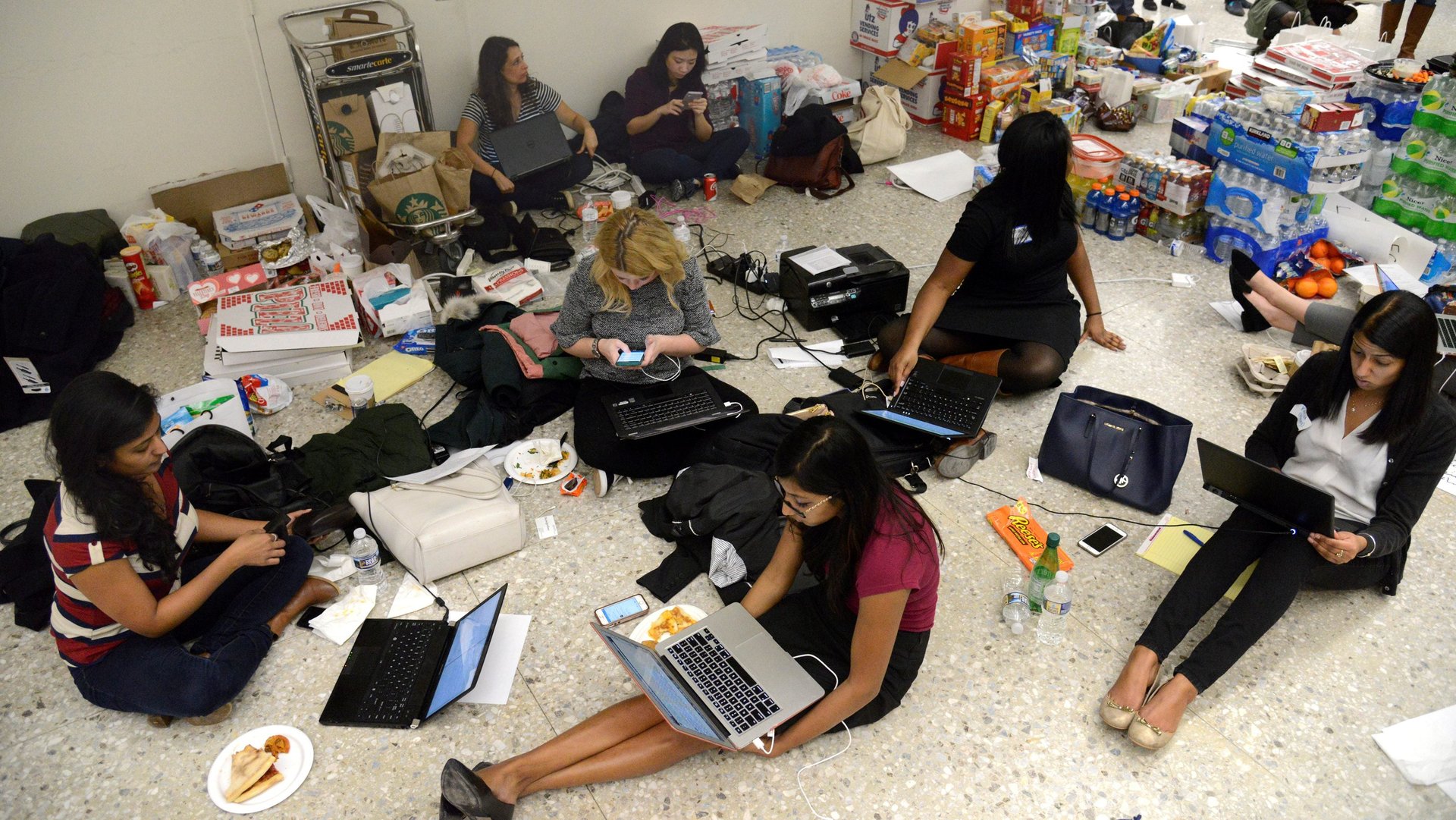Why most of the lawyers you see battling Trump’s immigration order are women
Along with stories of immigrants and refugees being stranded at airports across the US following Donald Trump’s executive order on immigration last Friday, came images of lawyers sitting on terminal floors poring over their laptops, trying to help those in the legal limbo. According to lawyers Quartz spoke to in Chicago, San Francisco, Atlanta, Minneapolis, and Dallas, many, if not most, who rushed to volunteer were women.


Along with stories of immigrants and refugees being stranded at airports across the US following Donald Trump’s executive order on immigration last Friday, came images of lawyers sitting on terminal floors poring over their laptops, trying to help those in the legal limbo. According to lawyers Quartz spoke to in Chicago, San Francisco, Atlanta, Minneapolis, and Dallas, many, if not most, who rushed to volunteer were women.
Sarah Owings, an immigration attorney and the chapter chair of the American Immigration Lawyers Association (AILA) for Georgia and Alabama, says she was the first person from various legal and humanitarian organizations to arrive at the Atlanta airport on Saturday, when 11 permanent residents from the countries covered by the ban were being detained and questioned.
She put out a call on her organization’s listserv saying “I’m going to the airport, who is coming with me?” and immediately got affirmative responses from a number of women. “When the hammer dropped on us all, women answered the call,” Owings said. More men appeared on the second day, but throughout the ordeal “I would say women dominated,” she said.
There could be several reasons for this. First, it appears that immigration law attracts more women than men. According to the National Association for Law Placement (NALP), women accounted for fewer than 34% of all US lawyers employed by law firms in 2016, while the American Bar Association says that women accounted for 36% of the legal profession in 2016. But data from AILA shows that women make up the majority of their members: out of 8,052 AILA members who reported their gender, 57% were women and 42% were men.
“Based on all the data that we do have it does seem that women dominate the profession,” said Jennifer Minear, national treasurer of AILA. “In particular in those areas where the people involved are the most vulnerable: deportation, removal, asylum, humanitarian-based, unaccompanied minors.”
Minear, a graduate of Cornell Law School who practices in Richmond, Virginia, thinks women choose immigration law in part because it’s easy to become a solo practitioner, which allows for greater flexibility balancing work and home life.
She said she was attracted to the field because of the potential to make a difference. “It’s one of the best areas of law in which to make a personal, deep impact in another human being’s life,” she said. “I couldn’t get that level of satisfaction or personal interaction in any other area of law. “
Mercedes Badia-Tavas, a lawyer who coordinated AILA’s efforts in Chicago, said that women “tend to, though not always, have more empathy and concerns for social justice and civil rights, that people are treated equally. We live with that every day.”
Many male lawyers were also helping at the airports last weekend, and so were lawyers who don’t specialize in immigration law. However, one female lawyer who had been at a Texas airport and asked not to be quoted by name, had some harsh words for her male colleagues:
“There’s a lot of male immigration lawyers, but when it comes to a crisis like this, females are more sympathetic,” she said. “I have been working non-stop for three days and I have not made a penny,” she said. A friend, who is a male immigration lawyer, went on vacation over the weekend, she said, because he felt it wouldn’t be lucrative. “Male immigration lawyers look at this and say ‘This is not a business opportunity for me,’ ” she said.
“Females have more of a bleeding heart,” she said.
Heather Timmons contributed reporting to this story.
Correction: This story initially stated that NALP’s data referred to all US lawyers—it refers to US lawyers employed by law firms. The American Bar Association has the share of women in the “legal profession” at 36%.